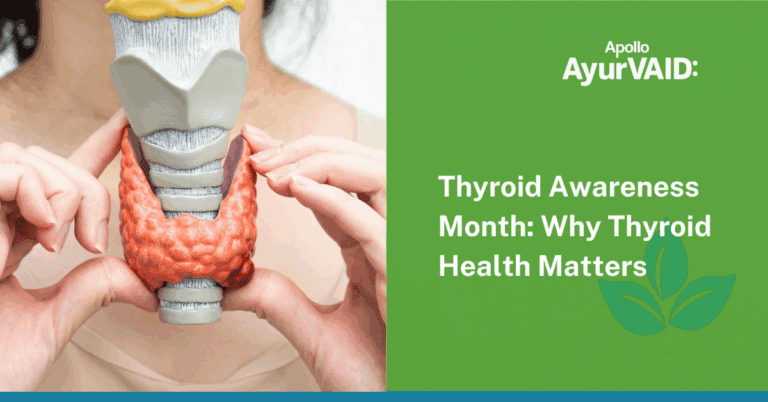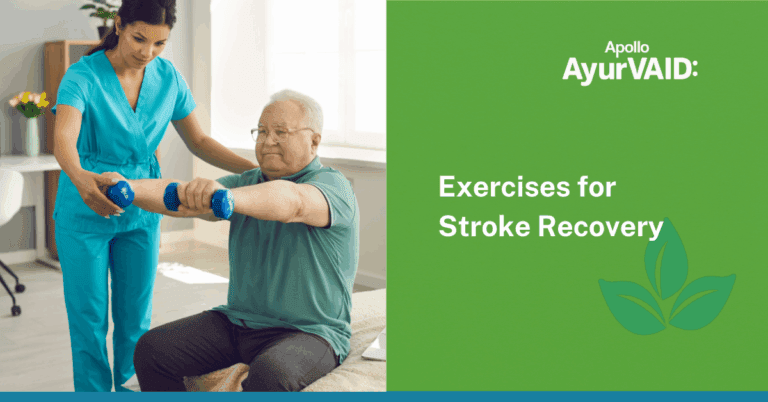Imagine if your brain could learn to adapt to change and even heal after it was hurt. The great news? It does. Due to a remarkable natural function known as neuroplasticity, our brains aren’t hardwired entities—they’re fluid, constantly evolving, and expanding. This ability allows you to rewire your brain—adapting to change, recovering from trauma, and continuing to grow mentally.
In contemporary science, the neuroplasticity of the brain is its ability to create new neural pathways. It is how we learn skills, construct memories, break free from trauma, and heal after a stroke or other trauma. In Ayurveda, this same idea of adaptation and change is expressed in the old concept of Saatmya—the body and mind’s ability to acclimate to new surroundings, diets, and habits.
Let’s look at how both contemporary neuroscience and Ayurveda account for this incredible ability to rewire your brain and how to increase neuroplasticity.

What Is Neuroplasticity of the Brain?
Neuroplasticity of the brain refers to its lifelong ability to change and adapt by forming new pathways. It can:
Create new brain cells (neurogenesis)
Weaken or strengthen synaptic connections (functional changes)
Reestablish lost circuits after damage
These occur through two fundamental processes:
1. Structural Plasticity
This is the physical enlargement of brain cells:
Neurogenesis – creating new neurons, particularly in the hippocampus (crucial for learning and memory)
Axonal sprouting– new nerve fibers fill gaps within damaged areas
Revascularisation – new blood vessels enhance oxygen and nutrient delivery to healing brain tissues
2. Functional Plasticity
This concerns how brain circuits talk to each other:
Synapses get stronger or weaker and more or less rapid
Neurotransmitter concentrations are modulated
Nerve cells are made more or less sensitive to stimuli
These changes enable you to rewire your brain, particularly during recovery or learning something new.
How To Rewire Your Brain After Injury
The recovery from a stroke, trauma, or other injury to the brain encompasses separate stages:
Phase 1: The First 48 Hours
At this stage, injured cells start dying, and proper pathways of communication are broken. Yet, the brain immediately begins seeking alternative routes to maintain essential functions. This is the emergency state of the brain to remain active.
Phase 2: The Following Weeks
Then, support cells such as astrocytes and microglia intervene. They remove damage and begin to support the development of new synaptic links. The brain starts to rebalance its internal messages, moving between excitement and inhibition.
Weeks to Months
During the long-term phase, the brain restructures—new nerve fibers develop, neurons are established, and circulation is enhanced. At the same time, brain function is reallocated to healthy regions of the brain capable of assuming the functions of damaged areas.
Functional Reorganisation: The Brain’s Backup Plan
The brain is very clever. It doesn’t resign when a section is destroyed. Rather, it employs several strategies:
Equipotentiality – Other areas, even from the opposite hemisphere, assume lost functions
Vicariation – Brain areas not originally designed for a task step in to help
Diaschisis – Brain areas linked to the impaired region can temporarily close down, but may recover since connections are restored later.
This restructuring is why individuals can relearn to walk, talk, or move again following severe neurological damage. It’s how you rewired your brain for healing.
How to Rewire Your Brain and Boost Recovery
How to Increase Neuroplasticity Using Ayurveda
Activities like meditation, exercise, Rasayana herbs, and Nasya therapy are powerful Ayurveda ways for those seeking how to increase neuroplasticity naturally.
Begin early: Post-injury, early, and vigorous rehabilitation gives better outcomes.
Engage your mind: Reading, puzzles, learning a new language, or learning an instrument forms new pathways in the brain.
Practice meditation and yoga: These soothe the nervous system and nourish Vata dosha, which regulates brain activity in Ayurveda.
Move your body: Exercise enhances blood flow and nourishes neurogenesis.
Experiment with Rasayana herbs: Ayurveda rejuvenation aids in the recovery of Majja Dhatu (nervous tissue).
Consume restorative food: A brain tissue-boosting and Ojas-rebuilding diet is crucial. Beetroot has been researched for its positive effect on the neuroplasticity of the brain.
Use Nasya therapy: The nasal application of medicated oils serves to stimulate brain activity.
By utilising these instruments, you can consciously rewire your brain and open its gates to its potential to adapt and flourish.
Saatmya and Neuroplasticity
The term Saatmya, written in ancient Ayurveda treatises such as the Charaka Samhita, elegantly reflects contemporary concepts of neuroplasticity. Saatmya is the adaptability of the body and mind to changing situations—be it environment, diet, behaviour, or treatment.
Ayurveda perceives this process on several levels:
Deha Saatmya (Physical adaptation)
The body structurally adapts, such as the way brain tissues repair and rebuild themselves after damage. Ayurveda refers to this as Dhatu Parinamana, or tissue transformation. For this bodily adaptation, the Agni (digestive fire) has to be corrected. Any Ama (toxin buildup) in the body has to be eliminated. Once the Agni is corrected, it automatically aids in tissue nourishment, including the Ojas (vitality). This transformation corresponds to neurogenesis, sprouting, and revascularisation.
Manas Saatmya (Mental adaptation)The mind learns new habits, thoughts, and emotional patterns. This corresponds to functional plasticity—neurotransmitter and circuit changes.
Oka Saatmya (Environmental adaptation)
Oka Satmya, or Abhyasa Satmya, demonstrates the brain’s ability to acclimatise through repeated exposure, similar to neuroplasticity, in which repeated behaviors and experiences reshape neural pathways over time. Just as the body acclimatises to habitual substances, the brain also reconfigures itself to accommodate and normalise repeated stimulation, even though it may initially have been difficult or unnatural.
Dhatu Samya and Neuroplasticity
Dhatu Samya is the state of equilibrium of body tissues required for health, which is a direct facilitator of neuroplasticity – the adaptation and reorganisation of the brain. In equilibrium states of tissues, the nervous system gets the best nutrition and oxygen, and optimal conditions for neural adaptation and learning are created.
Swara Varna Prasada as Neural Health Indicators
Swara (Clear voice) and varna (healthy complexion) are interconnected signs of inner neurological equilibrium. Voice quality indicates that speech centres are in balanced neural coordination, and good complexion implies sound circulation that underpins brain function as well as plasticity.
Integrated Body-Brain Connection
The Dhatu Samya signs – proper digestion, quality sleep, balanced elimination, and clarity of mind – all lead to neuroplasticity. A healthy appetite leads to brain fueling, quality sleep leads to memory enhancement, proper elimination wards off neurotoxin buildup, and clarity of mind signifies clean neural networks.
Ancient Ayurveda recognised that whole body balance provides optimal conditions for the best functioning of the brain. In the case of harmonious dhatus, the brain has everything it requires for adaptation, learning, and healing – proof that neuroplasticity relies on overall body well-being rather than isolated brain-focused interventions.
Ayurveda also equates the phases of healing after trauma to its system:
Phase 1 = Ama Avastha (toxicity build-up + Dosha imbalance)
Phase 2 = Dhatu Samsamana(repairing tissues and rebalancing)
Long-term = Rasayana phase, when rejuvenation and optimisation are achieved
In Summary
Neuroplasticity of the brain is the brain’s ability to change and adapt by forming new pathways, a natural force for learning, healing, and development. Ayurveda provides several effective options if you are wondering how to rewire your brain. You can rewire your brain via activities, therapy, exercise, meditation, and a healthy diet. How to increase neuroplasticity? By bringing contemporary rehab with Ayurveda wisdom. The ancient concept of Saatmya advocates the same principles of healing and adaptability.
Cultivating your brain’s capacity to change—physically, mentally, and emotionally unlocks the gates to lifelong learning, resilience, and recovery. Whether you’re recovering from an injury or just looking to get smarter, remember: you can rewire your brain no matter how old you are.







